I thought it might be insightful to view the attributes and conditions that are most likely to lead to conversion through the lens of direct-to-consumer (D2C) sellers. To gain those insights, Digital Commerce 360 and Bizrate Insights surveyed 1,060 online shoppers in January 2023.
Online shoppers favor free, from shipping to returns
69% of those online shoppers surveyed said free shipping was the No. 1 reason that pushed them to make a purchase. Direct-to-consumer sellers were aggressive in tempting shoppers. The pop-up approach pictured below was prevalent across many that I came across and would certainly be welcome if I planned on making a purchase.
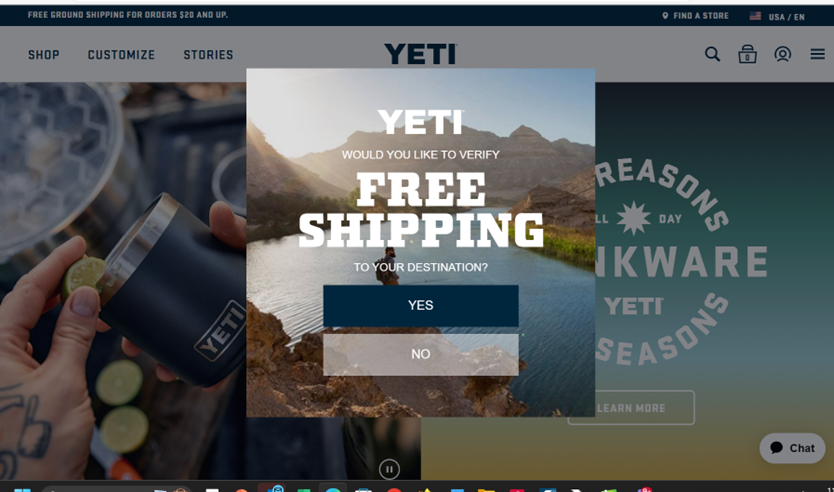
Yeti’s marketing pop-up offers free shipping.
Along the same lines, we see heightened interest in free return shipping among online shoppers. The combination of customer convenience, money-savings and a risk-free purchasing experience is hard to beat. Canada Goose’s return information suggests that 30-day complimentary return labels are available with just a few contingencies.
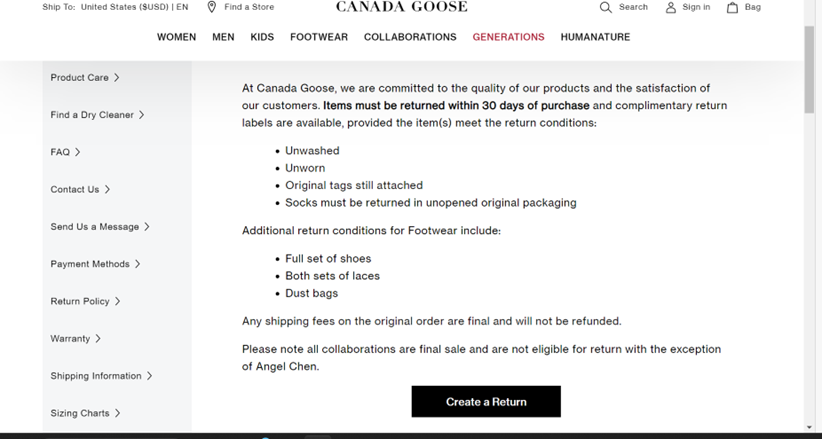
Canada Goose offers free return shipping.
Second on the list of conversion drivers was product selection — a factor for just under half of all participants (47%). While we have come to expect that these sellers feature all of their products for sale, exclusive items give shoppers a distinct reason to visit these sites instead of going to a multi-branded retailer. Dyson calls out “only at Dyson” products so shoppers know they will need to make the purchase at the brand’s own site.

Exclusive products at Dyson.
Trust is foundational for conversion
Trust has an array of meanings, but for me, being able to talk with a specialist is important. Not surprisingly, 43% cited purchasing from the retailer in the past as a reason to convert a second time. Often, the products I’m considering are complicated, so I appreciate this opportunity. In this instance, when I click on Ask a Specialist, I have the option to chat online or place a call — even sign language support is available at the Apple store.

Apple’s Ask a Specialist facilitates customer service.
Trust also can come from a brand’s values, and no one was more of a pioneer than Patagonia in this regard. The retailer’s environmental stance always seems to take precedent over the products it sells. On the retailer’s 50th anniversary, it once again sends a powerful message about life on earth.
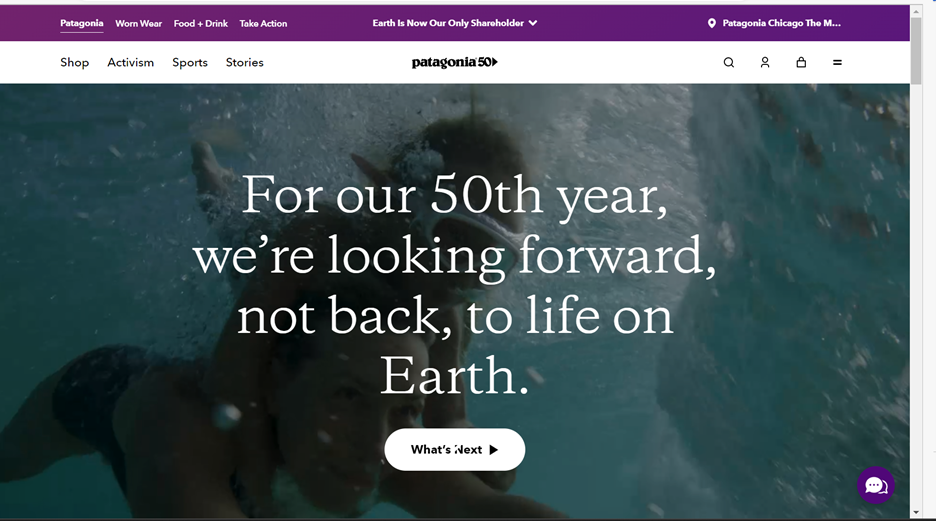
Patagonia puts forth a powerful brand message.
Can’t buy what isn’t available
High on the list of what causes customers to convert is finding in-stock products. It can be challenging in a category like shoes, so it’s nice to see Rothy’s is transparent with its availability. For the 45% who are pushed to convert based on stock status, this approach can help steer customers to a better option or at a minimum avoid disappointment.
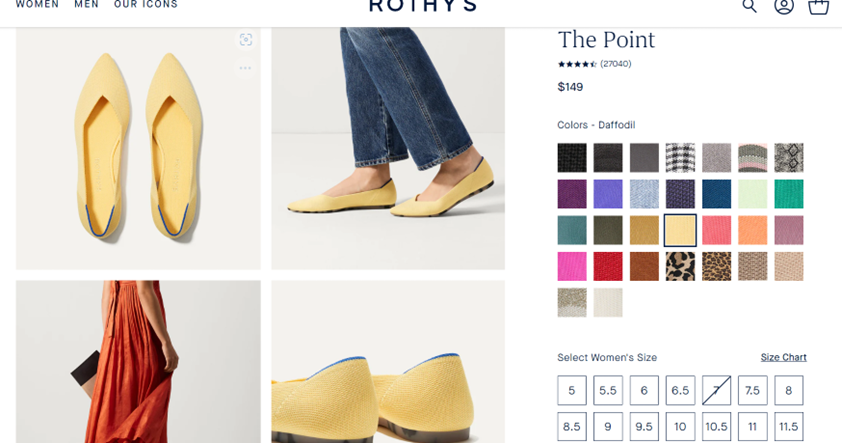
Real-time inventory via Rothy’s product page.
With 39% of survey respondents appreciating the power of product reviews to convert, I thought Estee Lauder had a nice take on this element with its Glowing Reviews on the homepage. The retailer merchandised its five-star products and in particular this “power pair” embracing the customer point-of-view, which is near and dear to the shopper’s heart.
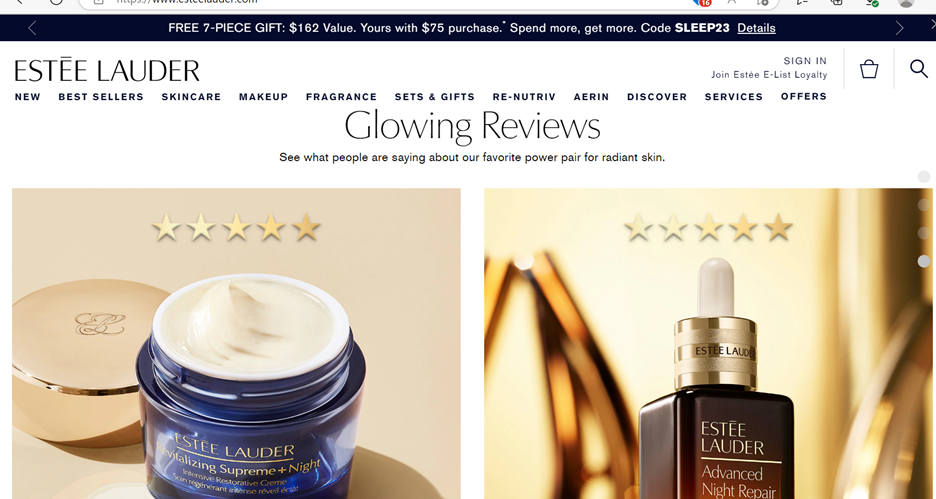
Estee Lauder highlights its five-star products.
Promotions beyond free shipping resonated with 36% of online shoppers. While many sellers offer 10%-20% for one’s email or phone number for customer acquisition purposes, I found Levi’s approach more compelling. The retailer opted for a classic retail theme: Encourage shoppers to buy more and save more. The power of the presentation highlighting the range of the assortment is inspiring, and my interest in buying more is piqued.
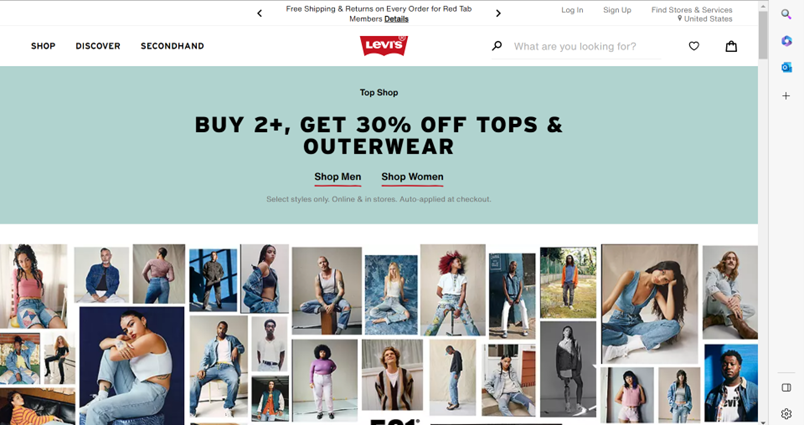
Levi’s gets promotional showcasing a broad assortment of products.
Imagery and information guides decision-making
Product information and imagery have always been important when it comes to converting online shoppers. 28% of those surveyed said product information and imagery were important in terms of conversion. The voice in Harry’s marketing has a tone that maintains brand expectations. The retailer goes beyond the details with “what’s good about it.” Additionally, shoppers have the option to gather more information, which includes how products are designed and access to customer service touchpoints.
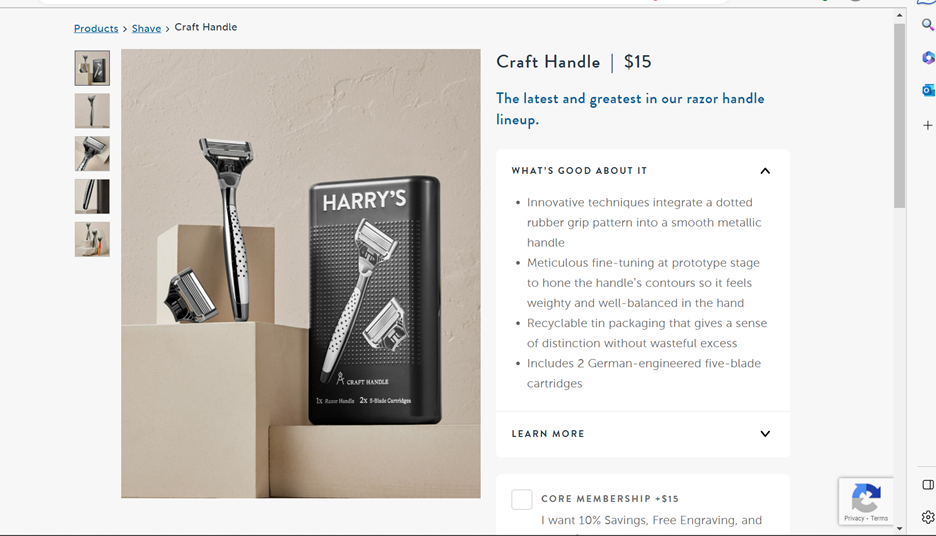
Harry’s includes comprehensive product information.
Information at Casper includes imagery about how the product is made. At this price point, sellers need to give online shoppers all the details so they can ensure this is the right item for them. Leveraging video helps bring the product to life in a way that’s almost impossible with static images.
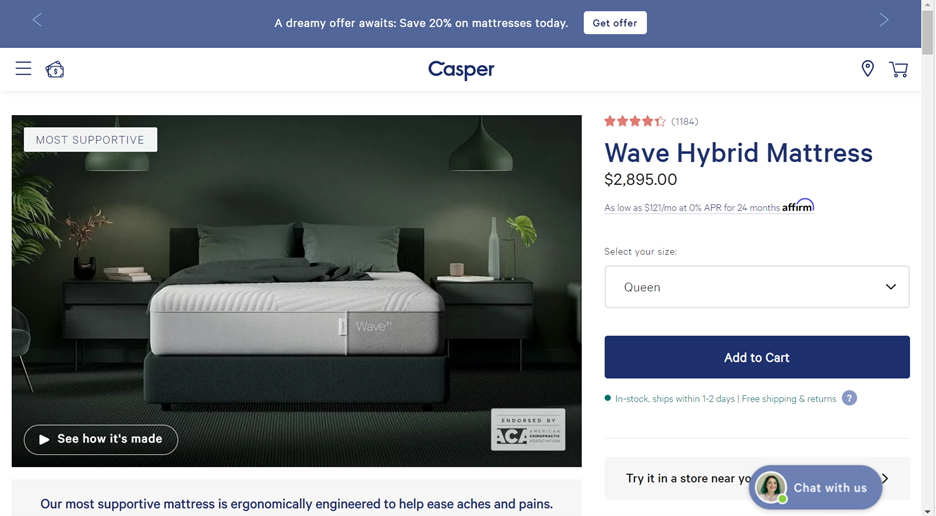
Casper integrates videos on how products are made.
The last example from an information and imagery perspective is Tumi. The customer gets wonderful internal and external views of the product, which allows her to get a better sense of the real size and fabrications. Investments in photography can also help reduce return rates, an added benefit for the retailer.
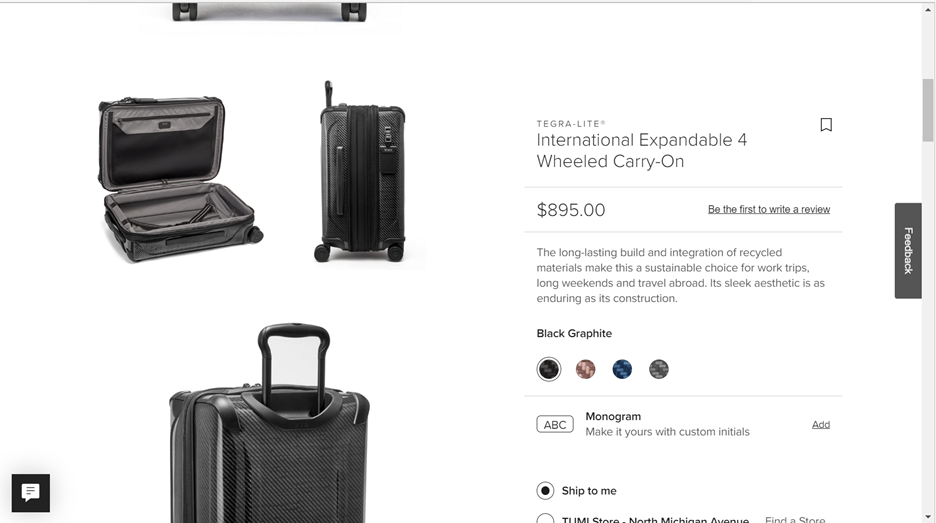
Tumi uses imagery to inform decisions.
Help shoppers find products
Site search means shoppers are typically using standard search parameters like price, size or color. But more interestingly, it can mean focusing on what is unique about a retailer’s product and/or category. Vera Bradley is known for its beautiful fabrics, so allowing customers to view the collection by fabric is a welcome choice. 24% of survey respondents shared they’re likely to place an order as a result of site search, so I advise continuing to optimize that experience.
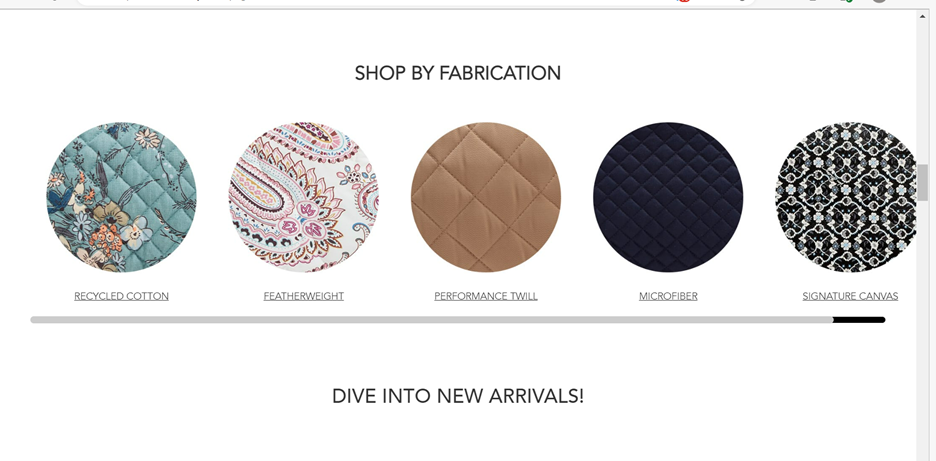
Vera Bradley offers shop by fabrication.
In the computer category, gaming, like many other aspects of their products, has unique needs. This example from Lenovo suggests some of the elements by which visitors can search: including price, screen size, memory, storage, operating system and even shipping, ensuring that online shoppers can find it their way.

Lenovo includes a broad array of search parameters.
Services are invaluable
Elf allows its shoppers to share with their beauty advisors their desired area of interest. Ideally, this directs the inquiry to a knowledgeable team member, saving everyone time in the process. These options to contact customer service by multiple means are a conversion factor for 19% of participants.
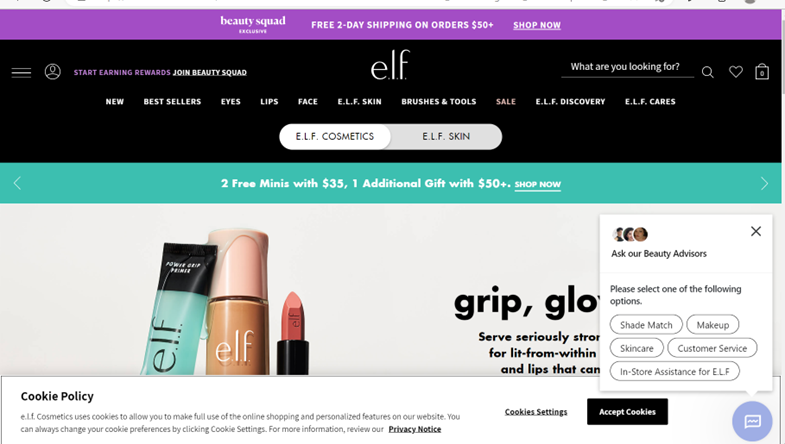
Elf guides those seeking customer service.
Trek promotes the message “Online bike shopping made easy.” The bike category is unique. As such, the services bike retailers make available support biker needs. Particularly interesting was Trek’s option to find a bike locally if one needs to ride the day of purchase. As fast shipping was an important conversion driver for 61% of those surveyed – in third place trailing only free shipping and the right price – this addresses the concern head on. For many who prefer professional assembly, fast shipping is an option with delivery of the shopper’s choice to follow. Trek’s 30-day no-hassle return policy is also welcome. It calls out its local services and support, giving the customer the confidence she needs for a wonderful bike-buying experience.
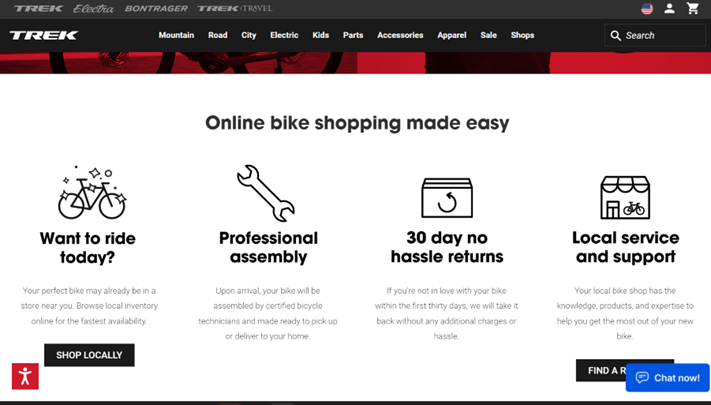
Trek promotes its capabilities and services.
Retention is essential to growth, and loyalty programs have played a pivotal role in this regard.
28% of survey participants indicated loyalty programs were a factor in placing an order. Lululemon positions the value of its membership, which includes being able to get early access to the newest gear. If you are a fan, that certainly would be a perk of particular interest.
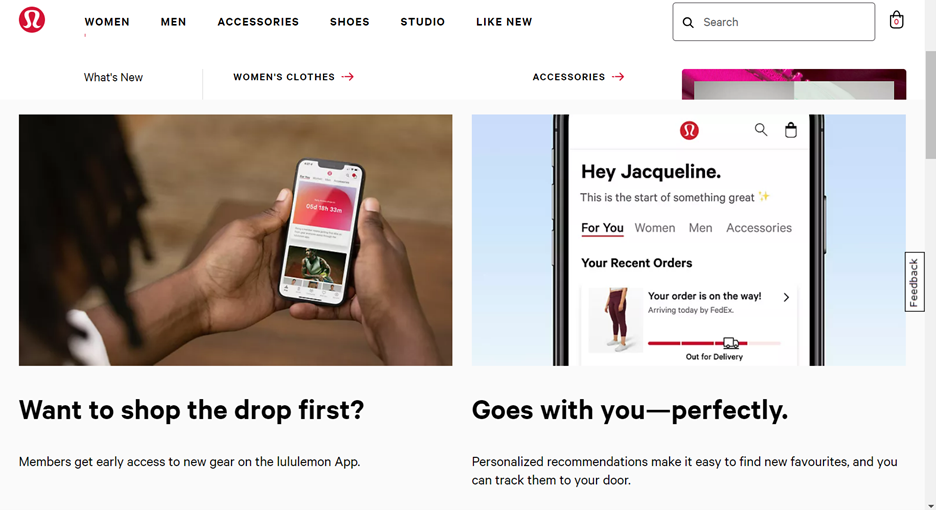
Lululemon’s membership program has its perks.
GoPro has a subscription service that is a time saver and of great value to those who use the brand’s products and services. The automatic upload of your footage to the cloud ensures you never lose that valuable photography. The discount certainly is appealing, at up to 50% on the site. Knowing there is a guaranteed camera replacement makes this brand’s customers confident in the investment they are making when subscribing. The cost is $49.99 per year.
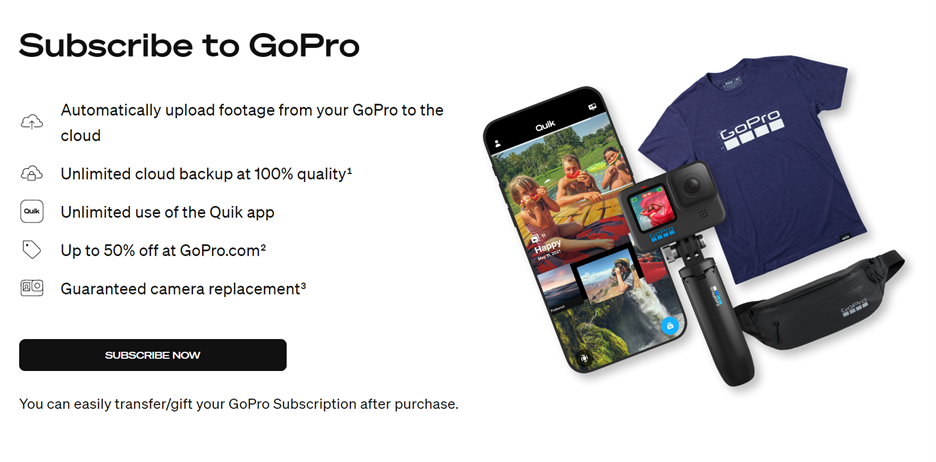
GoPro’s subscription service is benefit-rich.
Direct-to-consumer brands can send a powerful message to their customers. Branding and customer service will help them drive conversion. The choices they make, from free shipping to a free returns shipping policy, also will be integral to securing an order. Investments in information and imagery will pay dividends guiding online shoppers accordingly. While customer acquisition might be their initial play, retention tactics will be key to keeping customers coming back, converting and spending more.
Sign up
Stay on top of the latest developments in the ecommerce industry. Sign up for a complimentary subscription to Digital Commerce 360 Retail News.
Follow us on LinkedIn, Twitter and Facebook. Be the first to know when Digital Commerce 360 publishes news content.
Favorite